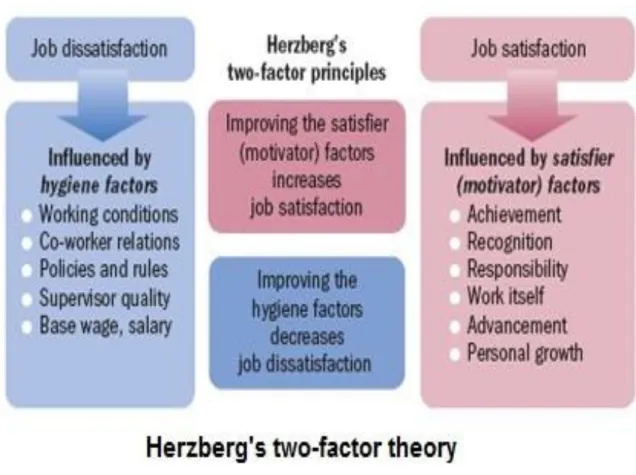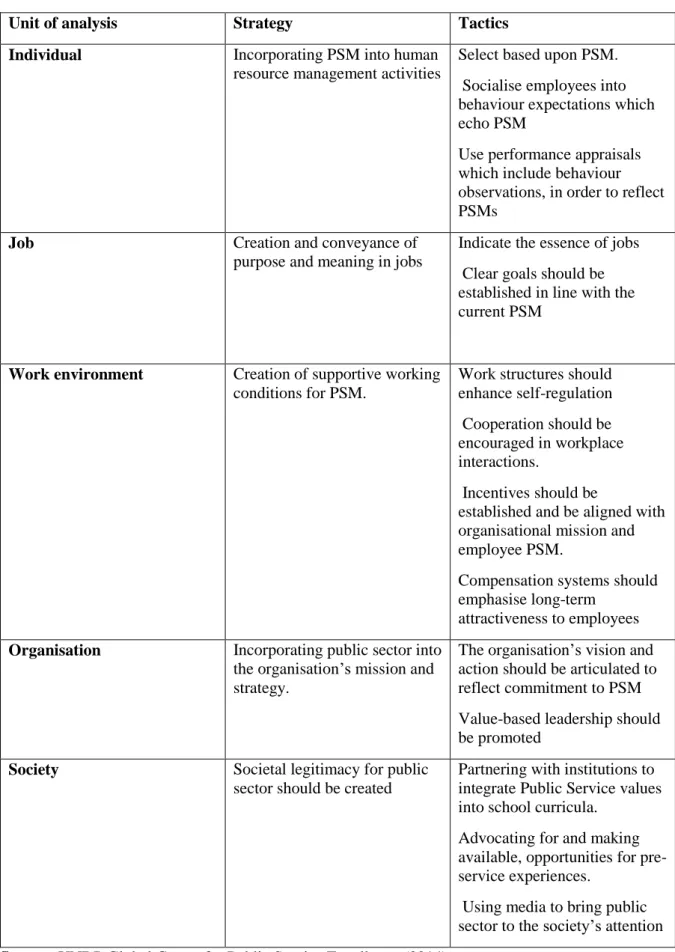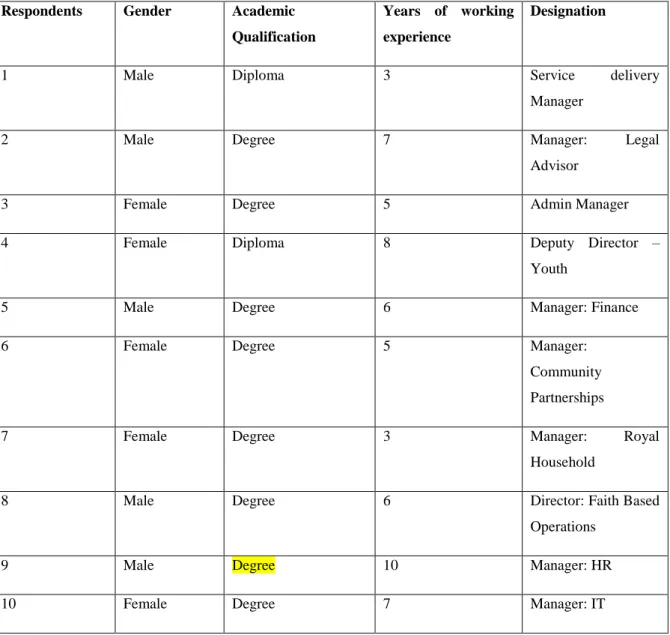Title: A STUDY OF FACTORS AFFECTING THE LEVEL OF JOB SATISFACTION OF EMPLOYEES IN THE OFFICE OF THE PREMIER, KWAZULU-NATAL. Qualification: Master of Business Administration. The main objective of the study was to determine the extent of job satisfaction levels in the office of the Premier of KwaZulu-Natal, as well as the factors that influence job satisfaction and how these factors affect performance in their various job roles.
INTRODUCTION TO THE STUDY
- Introduction
- Background of the study
- Problem statement and rationale
- Aim of the study
- Objectives of the study
- Research Questions
- Significance of the research
- Dissertation structure
- Limitation of the study
- Conclusion
To assess the extent of job satisfaction levels in the Office of the Premier, KwaZulu-Natal. What is the rate of job satisfaction levels in the Office of the Premier, KwaZulu-Natal.
LITERATURE REVIEW
- Introduction
- Theories of job satisfaction
- Maslow’s hierarchy of needs
- Hertzberg’s Two Factor Theory
- Defining job satisfaction
- Factors influencing job satisfaction
- Job satisfaction and employee performance
- Career development opportunities
- Reward systems
- Organisational commitment
- Public Service Motivation (PSM)
- Summary
Personal characteristics of employees are also shown to influence job satisfaction (Širca, Babnik & Breznik, 2012). Many studies have shown a direct relationship between job satisfaction and employee performance (Tharenou, 1993; Judge et al, 2001; Locke, 1976).

RESEARCH METHODOLOGY
- Introduction
- Research Design
- Qualitative Research Approach
- Case study
- Target population and sampling
- Data collection method
- Interviews
- Pilot study
- Ethical considerations
- Data analysis
- Validity and reliability
- Trustworthiness
- Credibility
- Transferability
- Chapter summary
A sample of ten managers from the Office of the Premier-KZN was selected to participate in the research. Again, the nature of questioning is such that the researcher does not interfere with the data collection process. A total of ten interviews were conducted with leaders from the Prime Minister's office.
After this, the researcher approached the potential participants to explain the purpose of the study.
RESULTS AND DISCUSSION
Introduction
Participants’ characteristics
Of the ten managers who participated in the study, five were men and the remaining five were women. From the researcher's point of view, this was highly commendable, recognizing gender balance in the workplace, especially as women were promoted into leadership positions. However, three to ten years of work experience in the same position is good enough to effectively carry out his or her responsibilities in the workplace.
Again, the criteria for selecting participants for the study was not based on the years of experience, but rather the fact that they held management positions in the organization, thus qualifying them to participate.
Job satisfaction and organisational output
Yes, job satisfaction is important, no one wants to work in an environment that is unsatisfying, unsatisfying and demoralizing. This now means that job satisfaction is very badly harmed, under general circumstances employees are unhappy, they are dissatisfied and sometimes it is about the work they do versus the incentives they get, which do not necessarily have to be monetary, but also recognition of the work you do, respect. These are all things that contribute to job satisfaction among employees, but in the office of the Premier there are more employees stepping on each other's feet, lines of accountability are blurred.
Thus, it can be argued that Hertzberg in his theory the meaning of 'job satisfaction' is not clearly defined because it is used interchangeably with 'motivation', implying that they are synonymous.
Salary versus job roles
No, salaries are not fair as they depend on the job role the person is doing and also how long the person has been in that position because for each year there is something called a notch progression that increases with each year if you are still in the same position. The reality is therefore that reward (salary) is a key determinant of job satisfaction, although the participants clearly indicated that it is not only about the salary, but many things come into play, e.g. the work itself, relationships with others in the workplace, the supervisor-employee relationship, to name a few. In Hertzberg's words, a wage increase is merely a "shot in the arm" that provides temporary relief or boost, meaning the effect is short-term.
Nevertheless, salary levels are intended to reflect one's status in the hierarchical positions of the organization (Pandţa et al, 2015).
Employee recognition
In the public service, the state administration is trying to correct the imbalances as it has introduced the salary levels in the public service, although there are some of the fair ones. As also evident from the participants' responses, rewards can be intrinsic (e.g. recognition awards) or extrinsic (e.g. bonus, salary, promotion). This means that an organization's reward system has a great influence on employee performance and thus job satisfaction.
Similarly, Sarwar and Abugre (2013) noted that the more employees are recognized, the more satisfied they are with their jobs and the better they perform.
Working environment
The theory therefore reminds managers to get rid of the sources of poor hygiene that cause job dissatisfaction in the workplace, while ensuring that job satisfiers (e.g. pay) are available to increase job satisfaction.
Organisational experiences
Ironically, as one participant pointed out, it is those in the lower ranks who do most of the 'actual' work, while management does the planning, controlling, directing, to name a few. The systems approach emphasizes the importance of the parts to enable the organization to function effectively. This means that if some parts of the organizations are 'neglected' they in turn affect others, negatively affecting the functioning of the organization.
The above findings show that employees are dissatisfied with a number of things in the organization; that their needs are not being met, lack of privacy, lack of respect, laziness, salary that does not match job requirements, work overload, and that others do not do what they were hired to do but do something instead that falls outside their job description.
Career development and promotional opportunities
There are no guarantees of internal promotions due to the highly regulated nature of the public sector, recruitment and selection must comply with legislation. From the above answers, it appears that the participants unanimously agreed that employees are given the opportunity to further their education, knowledge and skills through the distribution of student grants. Similarly, they unanimously agreed that promotional opportunities are very rare, despite the efforts of employees to upgrade themselves through studies.
Thus, the lack of such growth opportunities often forces employees to look for them elsewhere (Kelley et al., 2009). The lack of personal growth is a serious threat to the employee and the organization, as it often makes the employee want to quit (Ongori & Agolla, 2009).
Performance appraisal
Again, Asegid, Belachew, and Yimam (2014) noted that if employees are promoted, they are more likely to be satisfied with their jobs. In this view, the more an employee feels valued, the more positive they become about themselves, as well as their ability to contribute, and therefore the less likely they are to leave the organization. This can only happen when they feel that the rewards they receive match their efforts and thus reward systems increase productivity and organizational success.
In other words, employee motivation is kept at peak if they are rewarded according to their performance (Hossain et al, 2012).
Decision making in the organisation
This is consistent with Hertzberg's (1959) theory, as indicated earlier in this chapter, which emphasizes recognition as one of the elements necessary for employee satisfaction. But in my directorate I make sure that I involve my employees in making the decisions of the work they do, we hold a meeting and I ask them what contribution they can make to make this project a success. It's because I want them to take ownership of the project so they don't say it's my thing, but it becomes our thing.
If employees' ideas and input are taken into account at all levels, it helps to improve the organization's productivity, as employees would not feel imposed, but are made a part of the organization by letting them have their input as well (Strumwasser & Virkstis) , 2015).
Manager-subordinate relationship
It really depends on the managers and how they choose to work with their staff, what leadership qualities they exercise. The participants in this study also described their work relationships with subordinates and superiors. I'd say it's pretty good, most managers are able to work well with their staff, but some are difficult to work with because some managers are not qualified to hold the position and therefore don't get the proper training to be good managers , are merely placed in these positions for nepotism, favoritism or political advantage, especially in this office.
Kebede and Demeke (2017) indicated that subordinates tend to be satisfied with their jobs if their managers engage them and at the same time allow them to exercise autonomy over their jobs, as well as involve them in decision-making processes.
Communication in the organisation
Again, they also pointed out that some managers are good, while others are not exemplary, evident from the complaints raised by their subordinates. They indicated that many things take place, without them being informed, new staff are appointed, and they are not formally informed about it, some of the issues that take place in the organization, they hear or see it in the media, without communicating internally is. Some participants noted that the communication is top-down in nature, meaning that the employees are only on the receiving end and are not given an equal platform to make their voices heard.
Top-down communication means that managers give instructions only to lower-ranking employees, who in turn are not given the space to provide feedback or their knowledge or opinions on any issue.
Intention to leave
Organizational commitment refers to the extent to which an employee feels a part of the organization and becomes loyal. For committed employees, the chances of turnover are very low, while the least committed employee is ready to leave the organization at any time (Garland, Hogan, Kelley, Kim & Lambert, 2013). The findings presented above indicate a lack of employee engagement, which means that employees can leave the organization at any time.
The notion of organizational commitment is directly related to the way the organization treats its employees.
Employees’ recommendations
If an employee is less committed to the organization, it implies that he does not intend to stay, but rather waits for the next opportunity to leave the organization. So, the more the employee is committed to the organization, the more the following increase: loyalty, trust, motivation and job satisfaction. From the findings presented in this chapter, the participants raised a number of issues that make them dissatisfied with the organization: lack of promotion opportunities, poor work environment, salary that does not match job demands, poor communication that is mainly from the top, employees not involved. in critical decision-making processes, to name a few.
From the description so far, it is clear that organizational commitment has an effect on job satisfaction and ultimately the employee's intention to leave the organization.
Summary
That the government would consider providing day care centers and gyms in the workplace, to accommodate the family life of the employee. This will ensure that the employee spends more time in the workplace and is satisfied because it will show that the employer is attentive to their needs. In the case of the recommendations, it is evident that the participants were responding to most of the challenges they highlighted in the previous discussions.
However, the fact remains that the more satisfied the employee is, the better he is in terms of performance and the more the productivity of the organization increases.
CONCLUSION AND RECOMMENDATIONS
- Introduction
- Addressing the research objectives
- Objective 1: To assess the extent of job satisfaction levels in the Office of the
- Objective 2: To identify the factors that positively influence job satisfaction levels of
- Objective 3: To suggest solutions to improve employee satisfaction levels in the
- Recommendations
- Areas for future research
- Conclusion
The findings presented in the previous chapter show that the participants accepted employee recognition as a factor affecting job satisfaction and thus employee performance. The study aimed to determine the factors that influence the job satisfaction of employees in the Prime Minister's Office. Lack of career development really threatens employee job satisfaction and ultimately performance in the organization.
The influence of rewards and job satisfaction on employees in the service industry and keywords.
Interview questions
Ethical Clearance Certificate
Informed Consent

